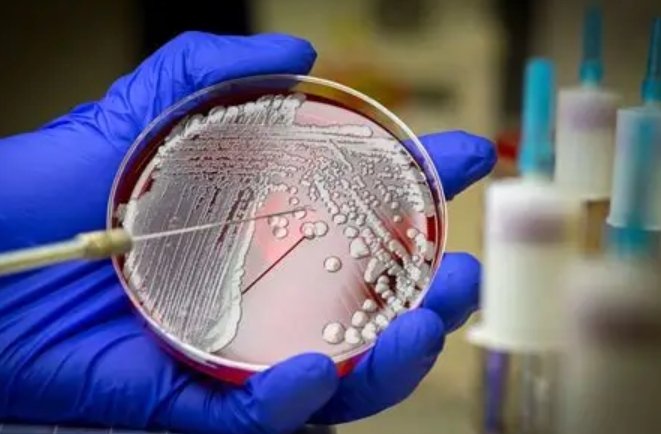
image credit- shutterstock
Only one out of ten drugs reaching clinical trials makes it to the market. Drugs that fail during clinical trials do so because the results generated during drug discovery and development fail to predict drug efficacy or toxicity in humans. Unfortunately, traditional in vitro culture techniques and animal models are poor predictors of human biology. Drug discovery scientists have therefore turned to humanised technologies, such as OOCs to help cross-validate and supplement data from traditional methodologies to improve the translatability of data between lab and the clinic and therefore increase medicines discovery success rates. A related area of high potential for OOCs is the testing of new drug modalities, such as cell or gene therapies, which rely on human-specific modes of action rendering animal models unsuitable for use.
The global organ-on-chip market was valued at $103.44 million in 2020, and is projected to reach $1.6 billion by 2030, growing at a CAGR of 31.1 per cent from 2021 to 2030, according to Allied Market Research.
Pharmaceutical firms are currently evaluating the applications of OOC in various phases of drug discovery. In May 2022, Columbia Engineering team demonstrated the first multi-organ chip made of engineered human tissues linked by vascular flow for improved modelling of systemic diseases like cancer.
In February 2022, data from preclinical studies using the Wyss Institute for Biologically Inspired Engineering at Harvard University (pioneer of this technology) Human Alveolus Chip were included in Cantex Pharmaceuticals’ Investigational New Drug (IND) application to the US FDA (United States Food and Drug Administration) to initiate Phase 2 clinical trials for a drug it licensed from Harvard University to treat COVID-19.
In 2021, airway Lung-Chip developed by the Wyss Institute demonstrated that the drug amodiaquine (antimalarial drug) reduced SARS-CoV-2 infection by about 70 per cent for COVID-19 and prevented transmission of the virus in roughly 90 per cent of animals.
OOCs models have also been used in disease modelling, compound screening and target identification. For example, in 2020, scientists from Roche reported a human retinal microvascular tubule-on-a-chip designed to mimic the blood–retina barrier, which can be disrupted in diabetic retinopathy and age-related macular degeneration.
Adoption of organ chips in drug discovery
OOCs have been around for just over a decade. In the last five years, pharma companies have been accelerating adoption of OOC technology throughout drug discovery workflows, from early target identification to late preclinical stages to facilitate more informed decisions.
“In the last few years we have seen increasing adoption of Organ-on-a-Chip technology within drug development pipelines, likely because researchers are recognising the need for better, more human-relevant preclinical models. Unlike conventional cell culture and animal models, organ-chips enable researchers to closely observe the effects of candidate compounds on human cells in an environment that closely resembles in vivo tissues. As the pace and scale of research using organ-chips continues to grow, the value of organ-chips is becoming increasingly clear,” said Dr Lorna Ewart, Chief Scientific Officer, Emulate, US.
Wyss Institute researchers launched Emulate, Inc. in 2014 to further develop and commercialise organ chip technology, bringing these important research tools to market.
Alongside the growing list of practical applications, the US FDA has even put forth the FDA Modernization Act of 2021, which calls for the use of alternative testing methods to animal testing to investigate the safety and effectiveness of a drug.
The US FDA has also partnered with organ chip developers like Emulate and CN Bio to develop industry standards and best practices for using organ chips in drug development.
“Acceptance of OOCs technology and its incorporation into preclinical workflows has been assisted by regulators, such as the US FDA, who recognise its potential. In a recent FDA publication, the advantages of CN Bio’s PhysioMimix in drug safety and metabolism applications were demonstrated over standard techniques and following on from this success, the FDA has chosen to continue working together with CN Bio and the PhysioMimix OOC system, broadening the scope of their research plan to include evaluating lung-on-a-chip for inhaled drug applications. With interactions between organ chips developers and the regulators becoming more prevalent, these types of communications send a reinforcing message to the pharmaceutical sector supporting OOC use, helping to open doors and remove adoption barriers,” said Dr Yassen Abbas, Lead Scientist, CN Bio, UK based leading organ chips developer that designs and manufactures single- and multi-organ chips.
As with any new technology, there is a need for standardisation, i.e., benchmarking against appropriate reference elements to ensure the robustness, reliability and reproducibility of data.
Can a chip really mimic an organ?
Can an incredibly complex system like organs/humans, ever be modelled in enough detail for results to be considered absolutely accurate?
“Absolute accuracy can never be achieved as these systems will never be as complex as a human organism. Having said that, we believe that it can be very accurate when the context of use is defined. It will even be possible to generate clinical trial like data in the preclinical stages of drug discovery using organ chips,” said Dr Reyk Horland, CEO at TissUse GmbH, a Germany-based firm which has developed a unique “multi-organ-chip” platform that provides unparalleled preclinical insight on a systemic level using human tissues.
Echoing similar sentiments, Dr Abbas said, “An in vitro model of human biology can never truly be perfect. OOCs technology aims to provide significant advances in human relevance to improve data translatability over standard techniques. OOC models mimic a well-defined phenotype and function of human organs and can be interlinked where appropriate into multi-organ systems that recapitulate processes such as drug absorption and metabolism, or to understand interactions between organs, such as inflammation, which drive disease and cause unexpected toxicities. ‘’
Most of the organ chips developers have made single organ chips of liver, lung, gut, kidney, heart, brain etc. Multi organ chips are rare, recently Columbia University has developed the world's first model of human physiology in the form of a multi-organ chip.
“We are optimistic that as adoption and research into this technology grows, organ chips will eventually become the primary model for predicting human response with regards to safety and efficacy in drug development pipelines everywhere. While no model will ever be absolutely perfect, organ chips far outperform currently used models like animals,” said Dr Ewart.
Looking forward, the future of OOC is bright. The technology is becoming more sophisticated at modelling human biology and it won’t be long before it provides a viable alternative to animal testing.
Ayesha Siddiqui




